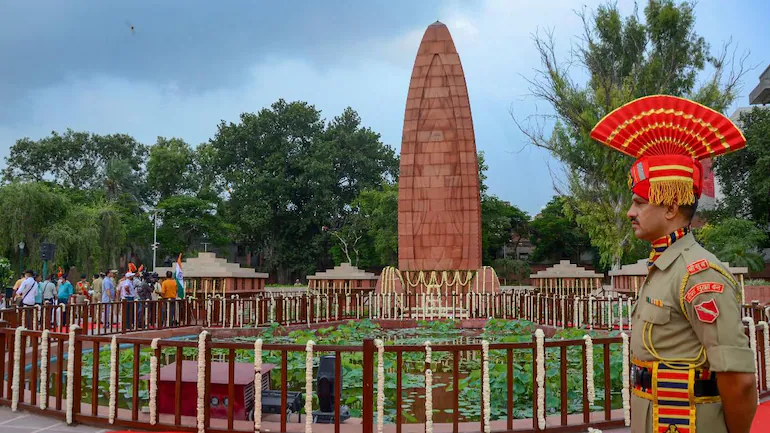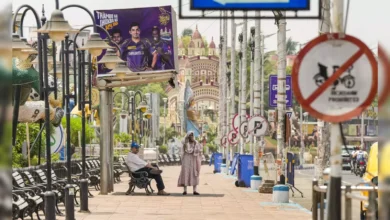Jallianwala Bagh Renovation draws flak over erasure of history of the massacre
As part of the renovation, the walls of the narrow entrance to the Jallianwala Bagh complex where the massacre occurred have been embossed with murals.

On August 28 last week, Prime Minister Narendra Modi invited the general public to witness the inauguration of the renovated complex of the Jallianwala Bagh Smarak. A sound and light show was set up to display the events of April 13, 1919. PM Modi stated that “it would display the horrific massacre of April 1919 and instill a spirit of gratitude and reverence towards the martyrs”.
However, the renovation has not gone down well with the general public and historians, among others, who have criticized the central government for ‘Disneyfication’ of the complex and for erasing the last traces of the history of the massacre.
Historian Kim A Wagner, who wrote the book titled “Jallianwala Bagh” analyzing various aspects of the massacre by British military commander General Dyer over a hundred years ago at Jallianwala Bagh in Amritsar, Punjab, posted two photos showing the before and after of the historical narrow entrance to the complex.
The first photo displayed the original passage entirely enclosed by houses and brick walls. A large number of people had gathered at the Jallianwala Bagh on April 13, 1919, to protest against the arrest of Dr. Satyapal and Dr. Saifuddin Kitchlew under the Rowlatt Act.
The narrow lane for entrance and exit to the Bagh is of great historical importance since it was completely blocked by British General Dyer and his troops before indiscriminately firing into the crowd. At least 1000 people were killed and over 1,200 other people were injured in the massacre. Many jumped into a well in the complex to escape the shooting.
The ‘after’ photograph, however, showed the renovated passage displaying murals depicting those who lost their lives in the massacre. Many have called out the Central Government for interfering with the historical site instead of preserving it in its originality.
Although in the past, some maintenance works have been carried out at the Jallianwala Bagh, the narrow lane measuring about 200 yards long and 150 yards wide was left untouched as a reminder of the horrific episode of India’s history under the British rule.
Indian Historian Irfan Habib has described the renovation as a “corporatization of monuments” that was leading to the loss of their “heritage value”. “Places of such historical value should be looked after without meddling with the flavors of the period these memorials represent”, he added.
From the Opposition, Rahul Gandhi also called out the Centre, saying “Disrespect to Jallianwala Bagh Martyrs will be done by those who do not know the meaning of martyrdom. I am the son of a martyr and will not tolerate disrespect at any cost. I am against this cruelty.”
The emptiness of the narrow passage and its walls was a reminder of the horror that the martyrs saw. It in itself was enough to evoke pain and serve as a reminder of what we lost. The ‘beautification’ of a place of such solemn remembrance appears superficial to say the least and can only be called a desecration of its brutal history.
Other Changes Made During the Renovation
Some other changes made in the renovation are the addition of four museum galleries through the adaptive reuse of redundant and underutilized buildings. They showcase the historical value of events that unfolded in Punjab during that period, with the fusion of audio-visual technology, including projection mapping and 3D representation, as well as art and sculptural installations.
Several new and modern amenities have been added, including redefined paths of movement with appropriate signages; illumination of strategic spots, landscaping, and hardscaping with native plantation; and installation of audio nodes throughout the garden. Also, newer areas have been developed for housing the Salvation Ground, Amar Jyot, and Flag Mast.
Meanwhile, Rajya Sabha MP Shwait Malik of the BJP, who is also one of the trustees of the Jallianwala Bagh Trust, has defended the decision to renovate the Jallianwala Bagh. “These sculptures in the lane will make visitors conscious of those who walked in on that day. Earlier, people walked this narrow lane without knowing its history, now they will walk with history,” he said.



